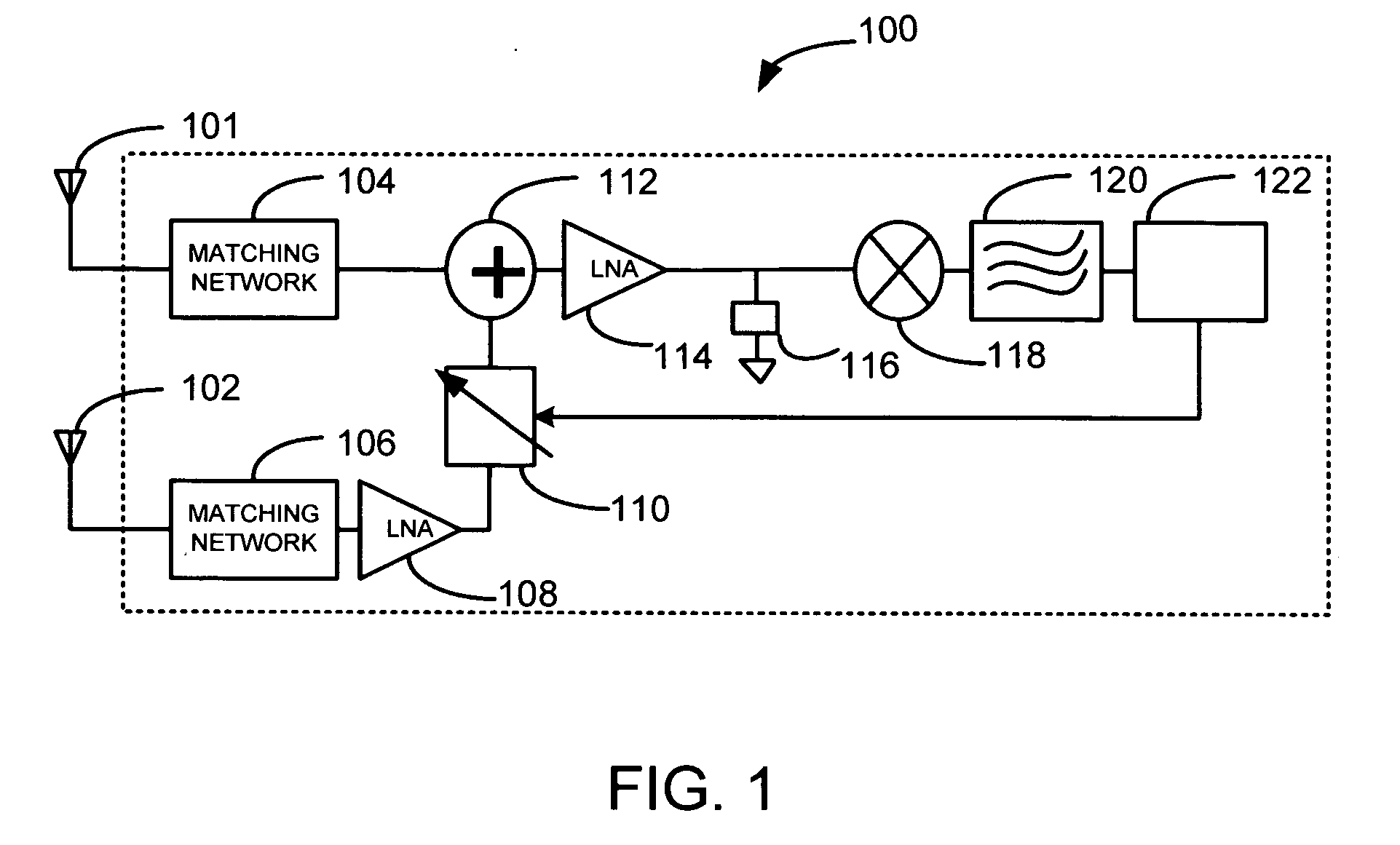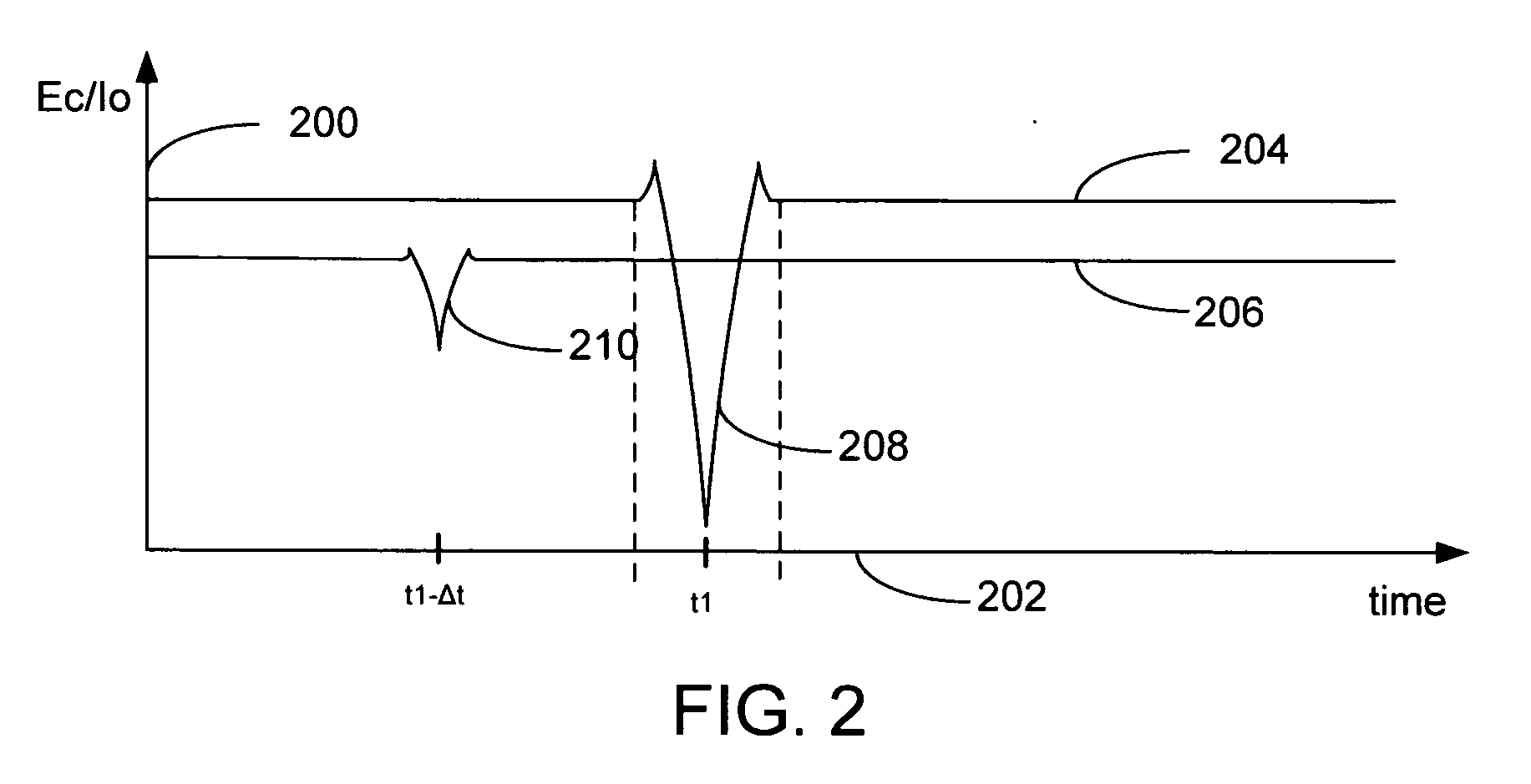Systems and methods for tuning an antenna configuration in a mobile communication device
a mobile communication device and antenna configuration technology, applied in the field of mobile communication devices, can solve the problems of poor call quality, dropped calls, poor reception, etc., and achieve the effect of improving reception and improving signal quality
- Summary
- Abstract
- Description
- Claims
- Application Information
AI Technical Summary
Benefits of technology
Problems solved by technology
Method used
Image
Examples
Embodiment Construction
[0023]FIG. 1 is a diagram illustrating various components comprising a mobile communication device 100. The components include a plurality of antennas, two of which are shown by way of example. These two antennas are antennas 101 and 102. As can be seen, antennas 101 and 102 are spatially diverse, i.e., separated by a distance, with respect to each other. In addition, each of antennas 101 and 102 can have a unique polarity in relation to the other, and / or a unique radiation pattern relative to one another. The combination of position, radiation, pattern, polarity, etc., of antennas 101 and 102 can be referred to as an antenna configuration. Thus, mobile communication device 100 can be said to comprise two antenna configurations. The purpose, as explained below, of including multiple antenna configurations is to enable device 100 to receive signals from multiple antennas that will be uncorrelated with respect to each other, so that the various signals can be used to improve receiver ...
PUM
 Login to View More
Login to View More Abstract
Description
Claims
Application Information
 Login to View More
Login to View More - R&D
- Intellectual Property
- Life Sciences
- Materials
- Tech Scout
- Unparalleled Data Quality
- Higher Quality Content
- 60% Fewer Hallucinations
Browse by: Latest US Patents, China's latest patents, Technical Efficacy Thesaurus, Application Domain, Technology Topic, Popular Technical Reports.
© 2025 PatSnap. All rights reserved.Legal|Privacy policy|Modern Slavery Act Transparency Statement|Sitemap|About US| Contact US: help@patsnap.com



